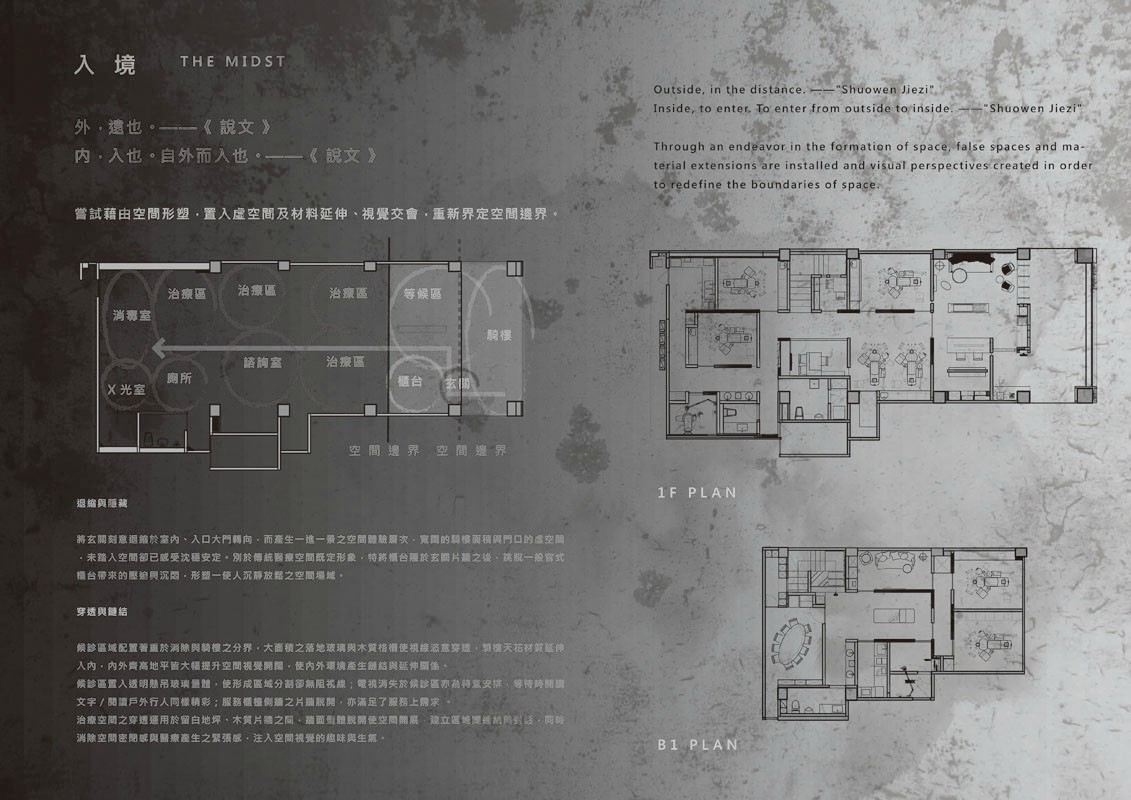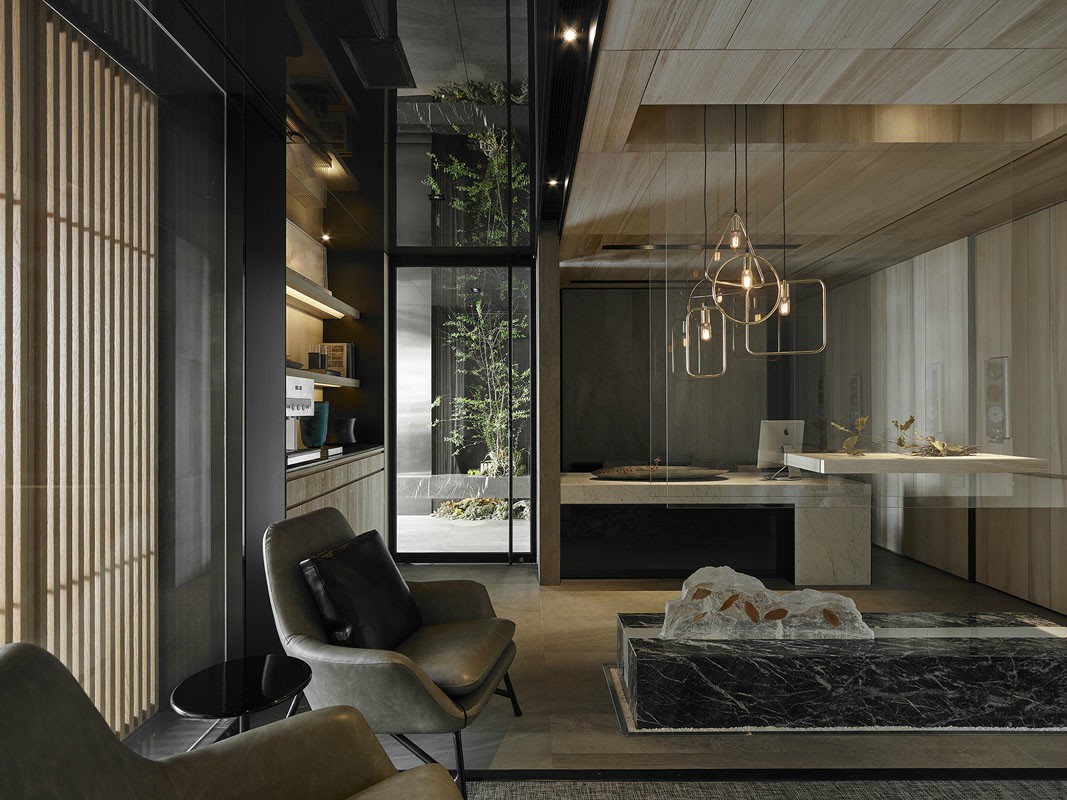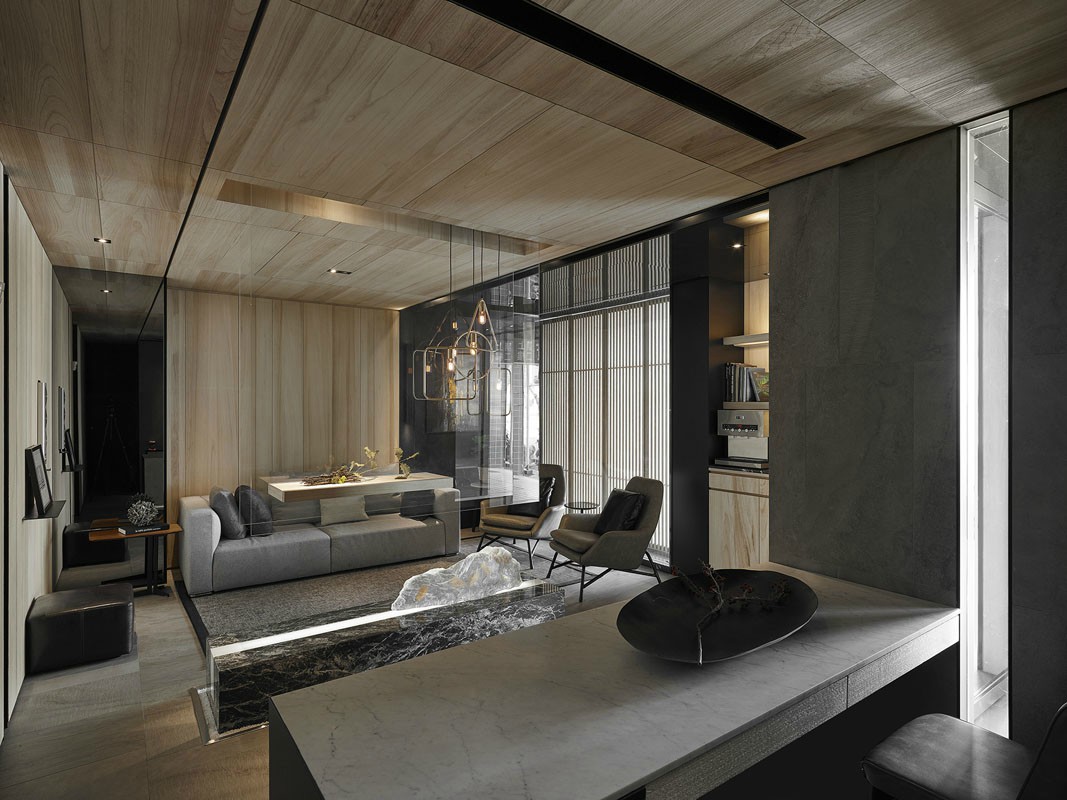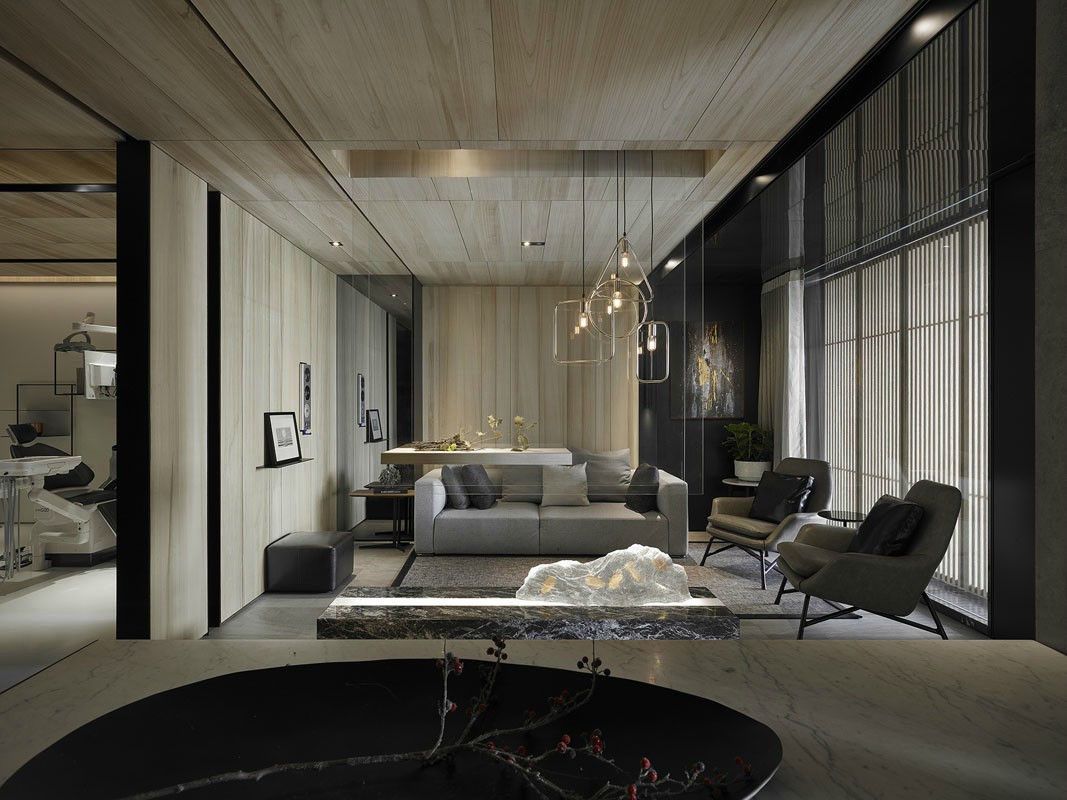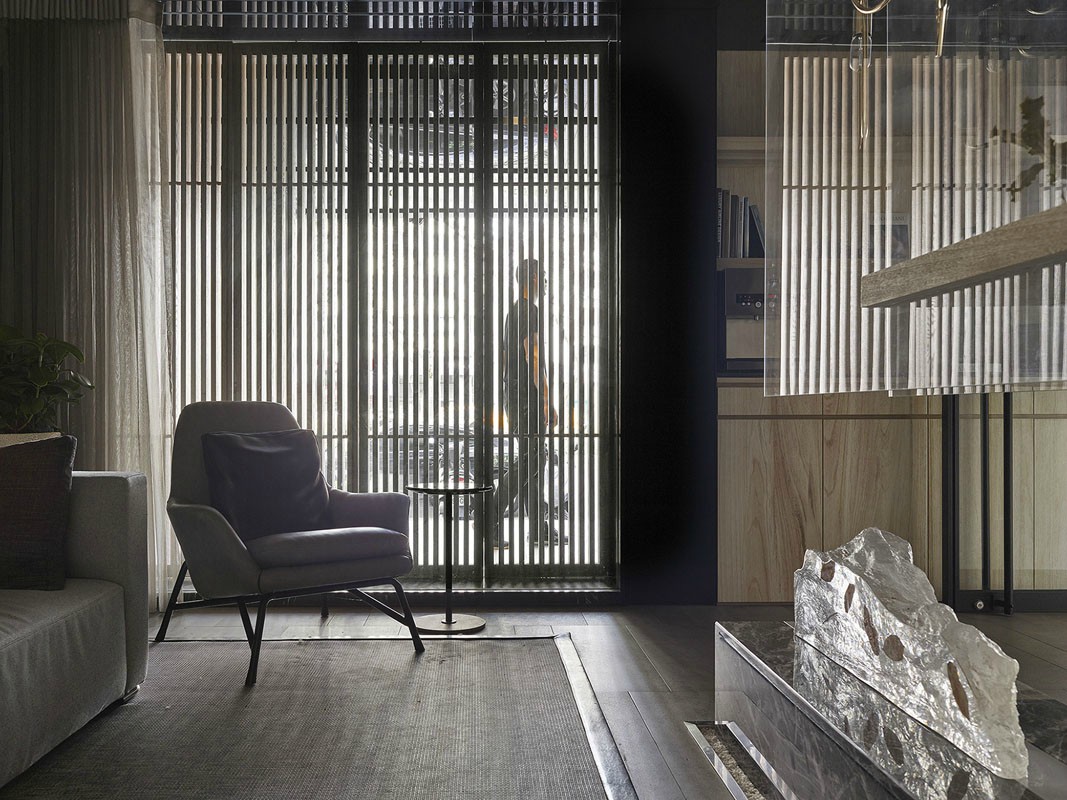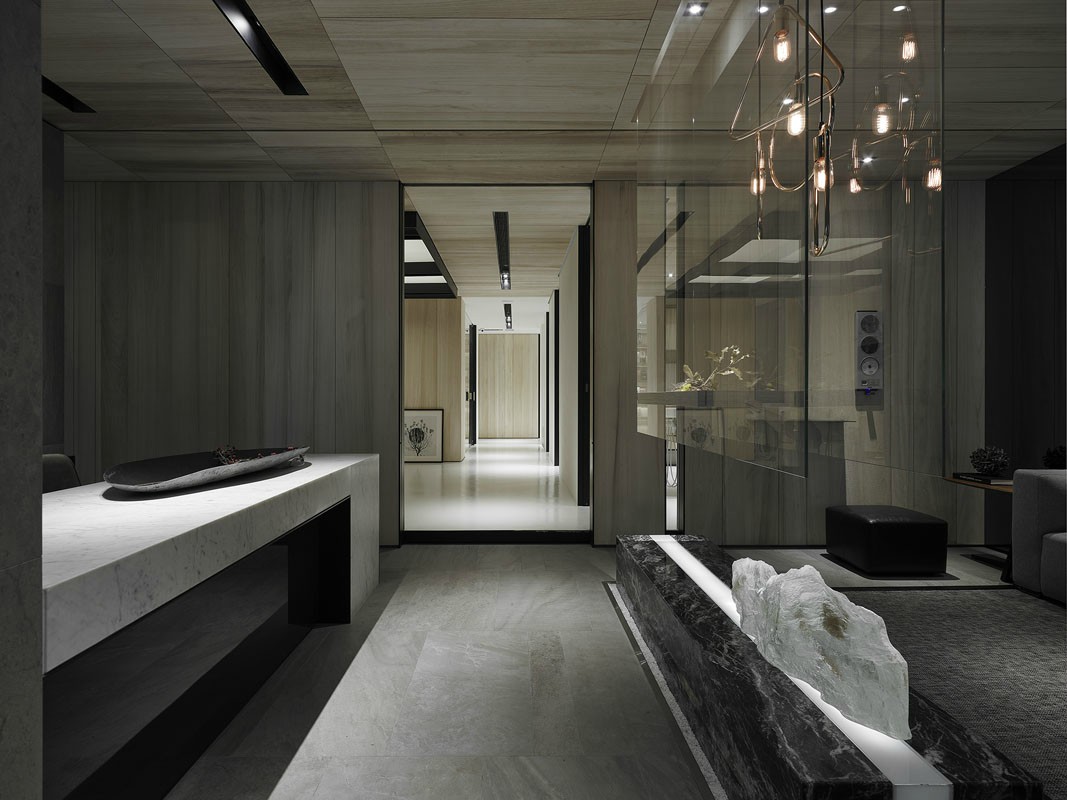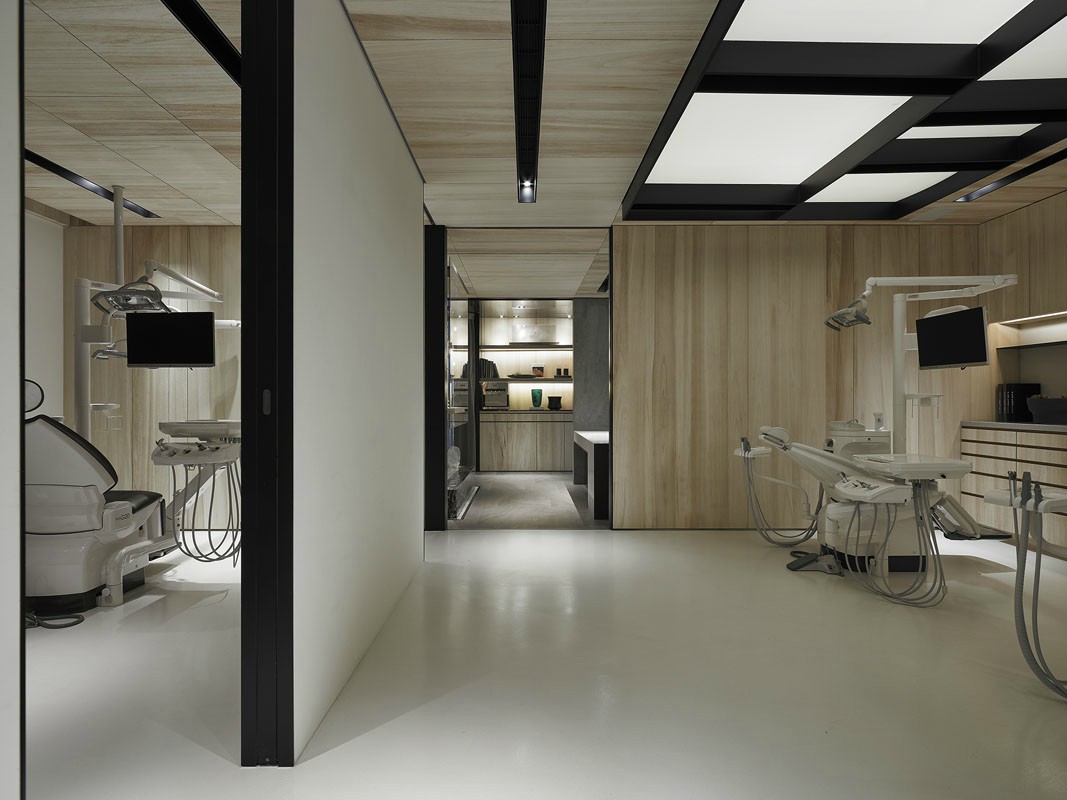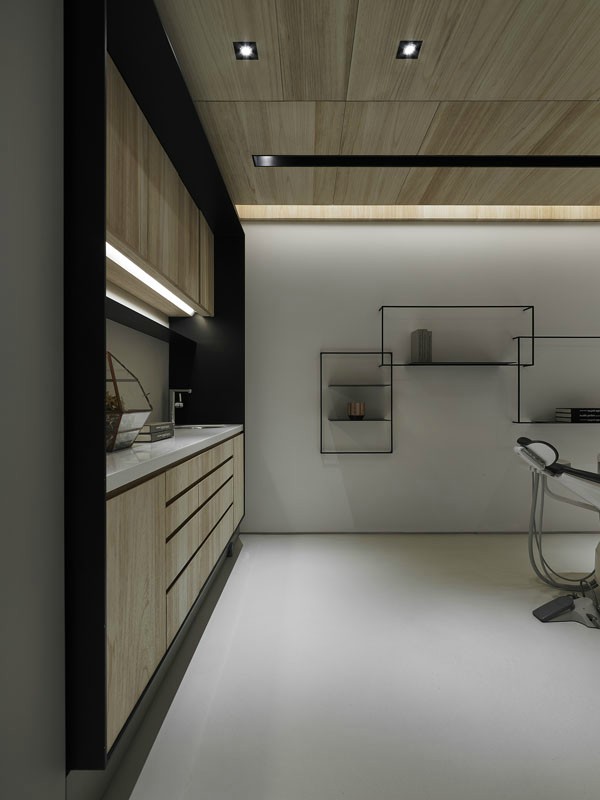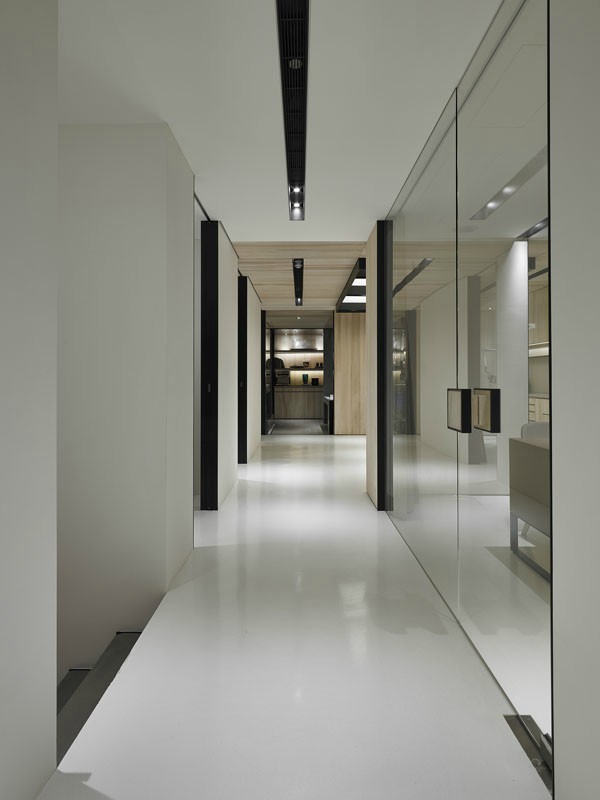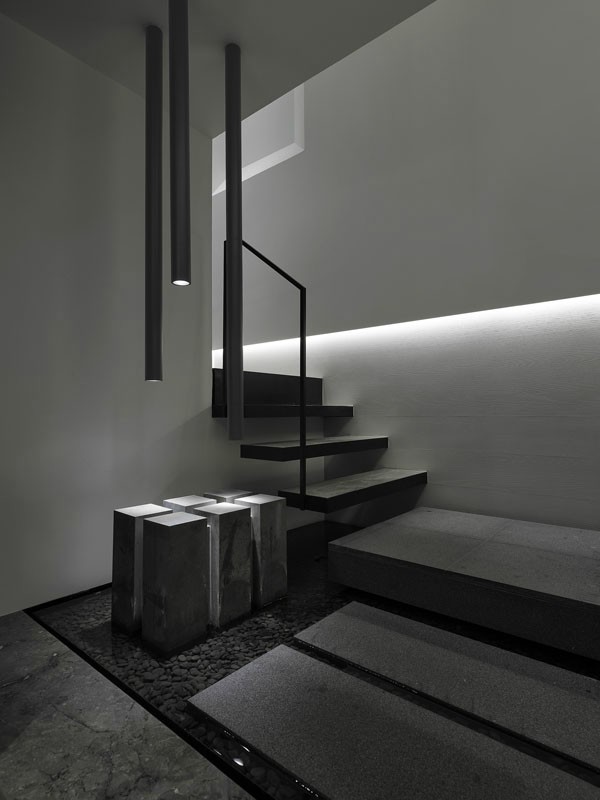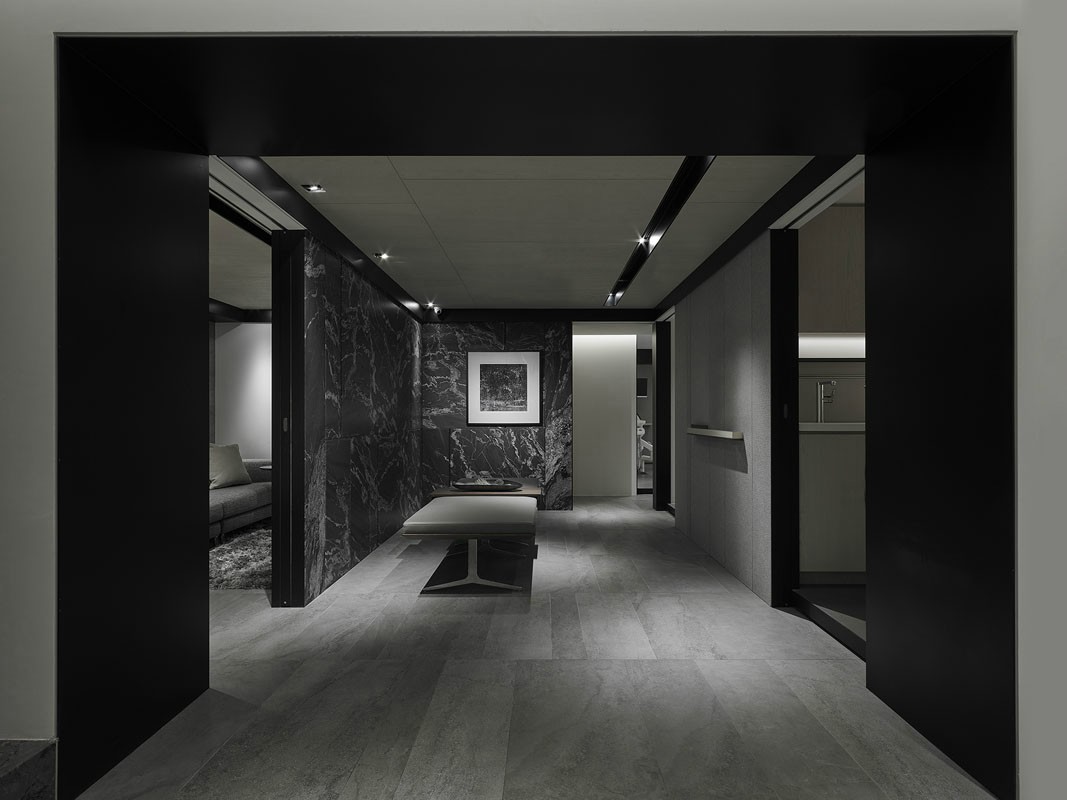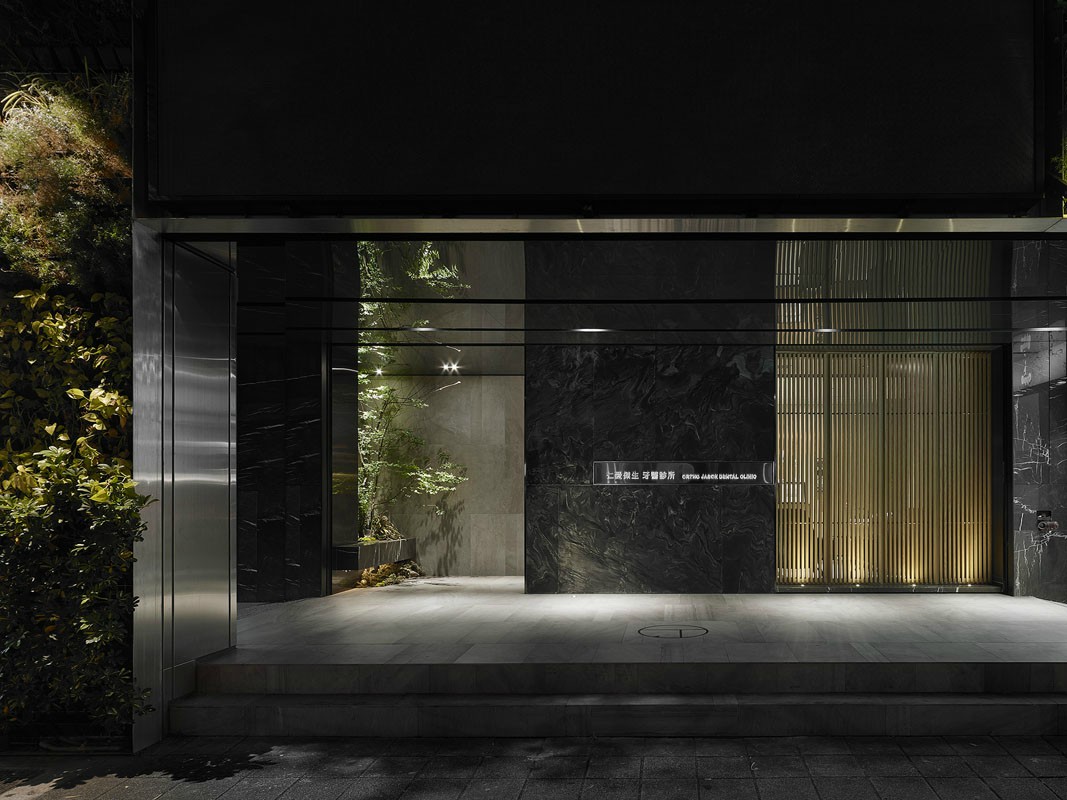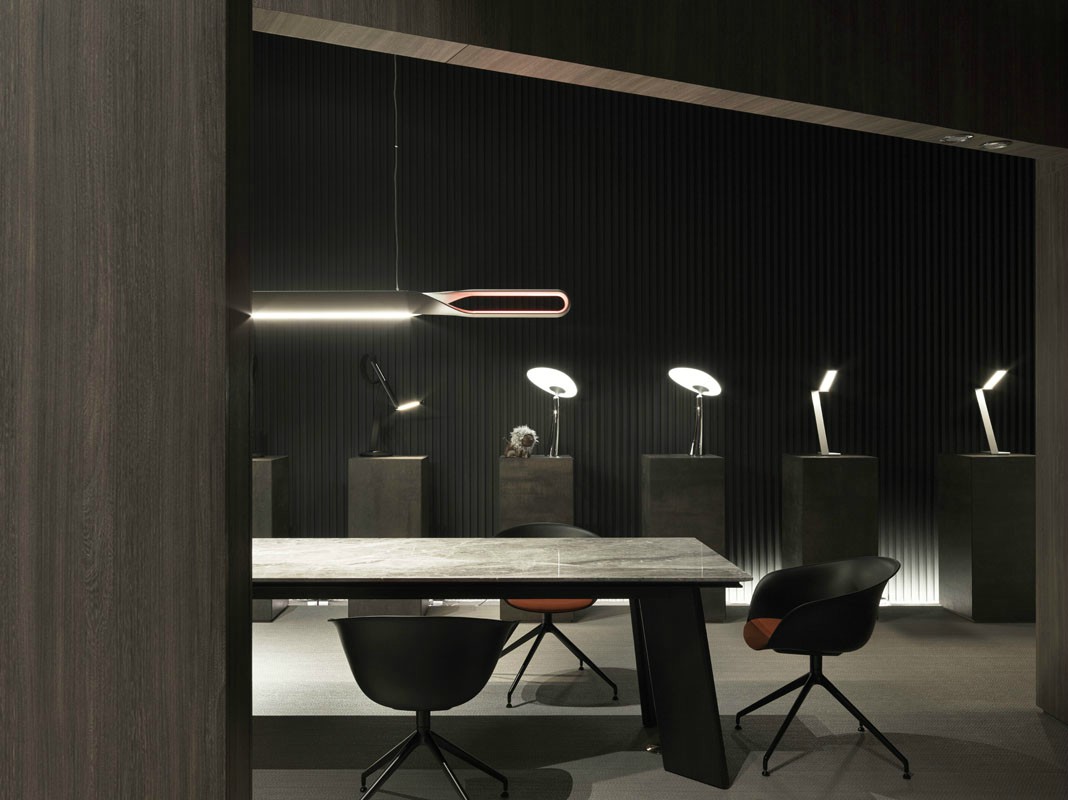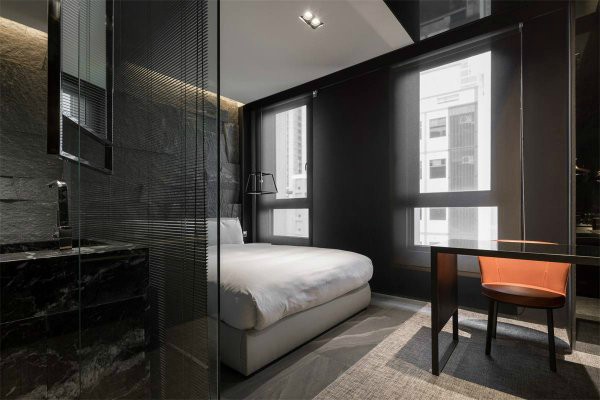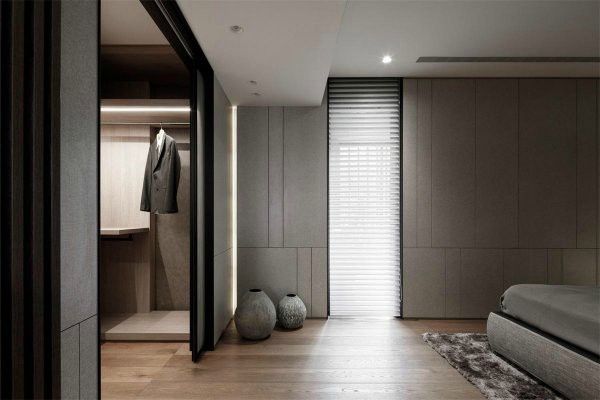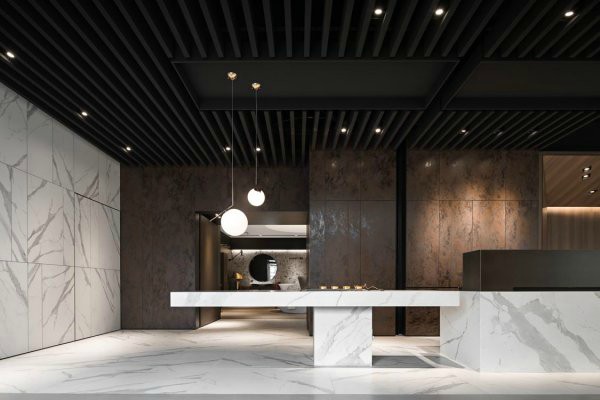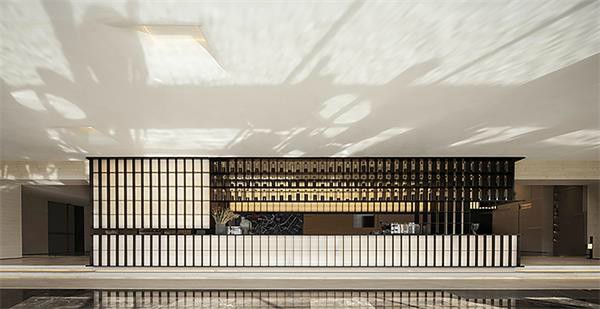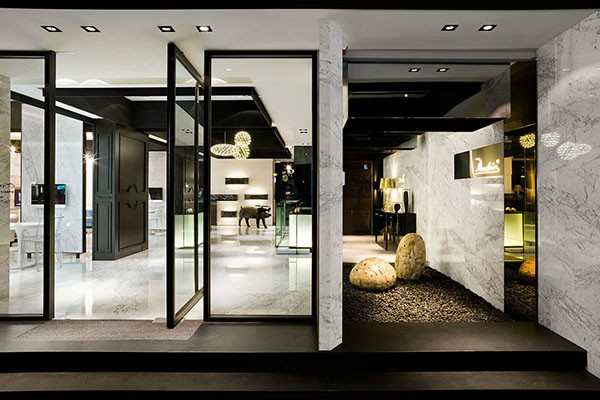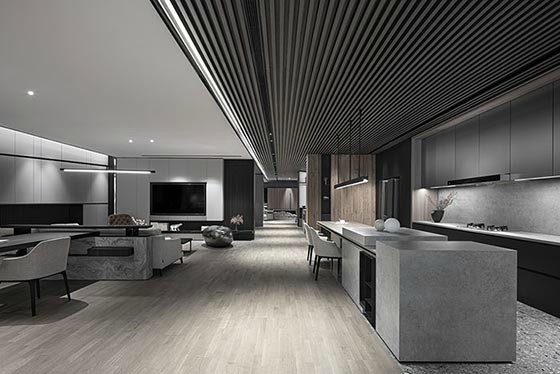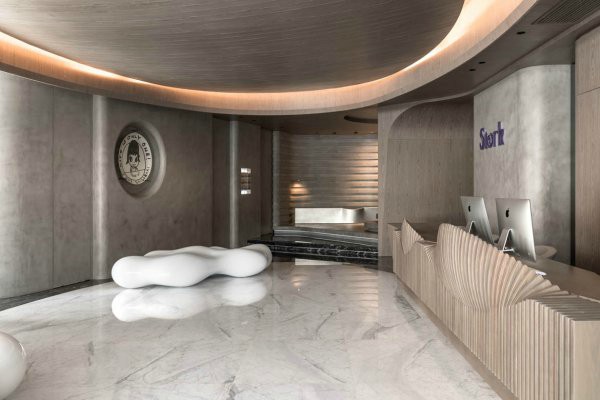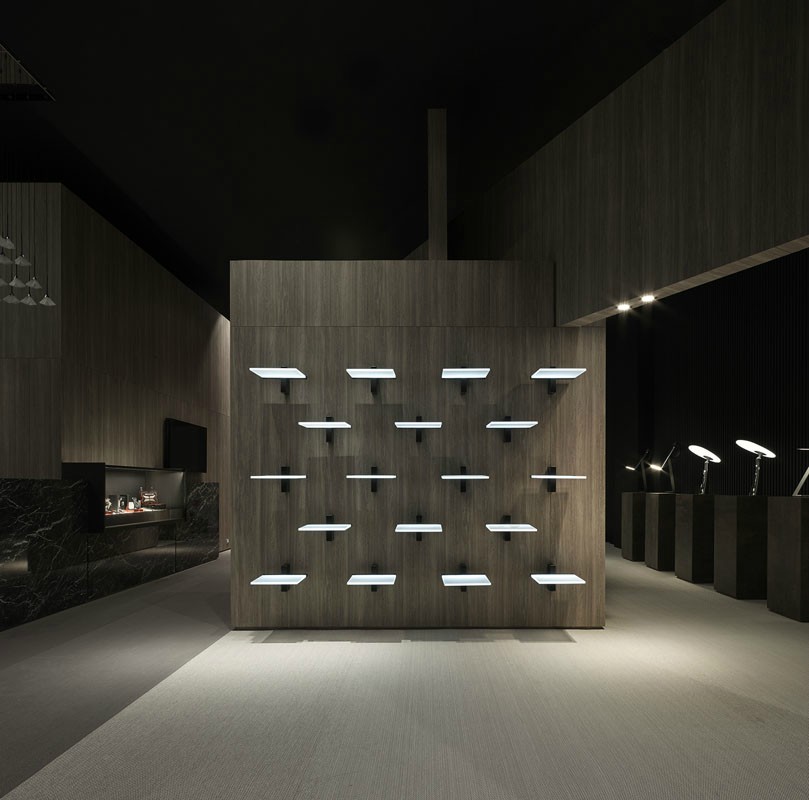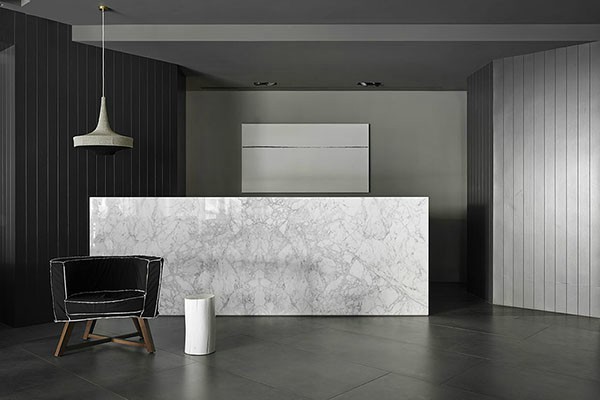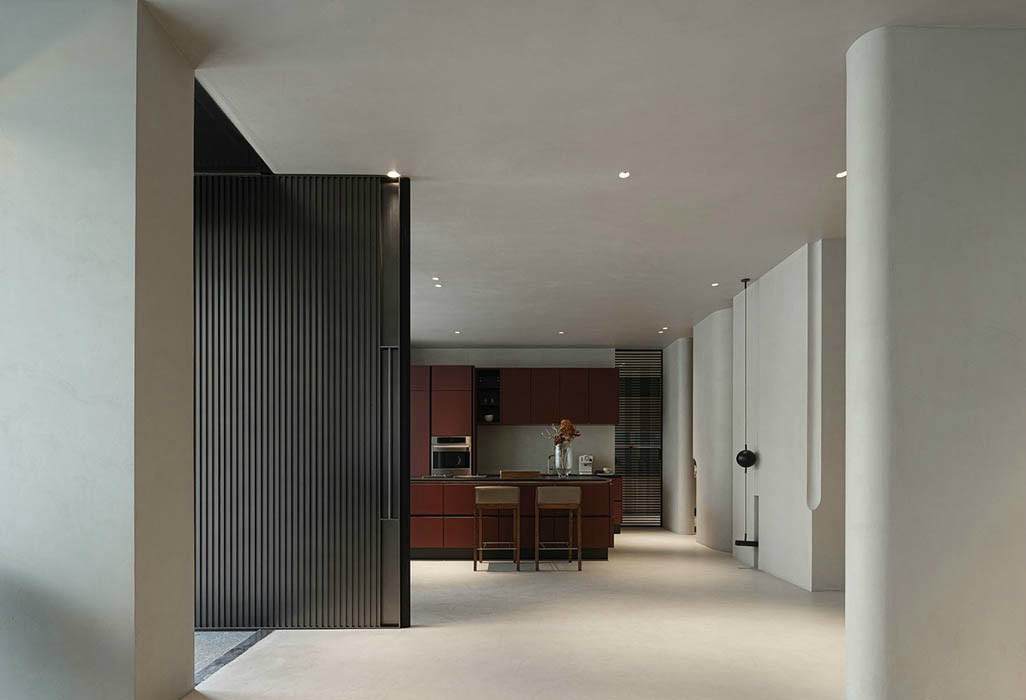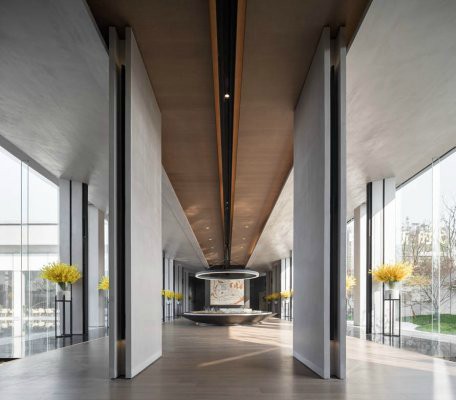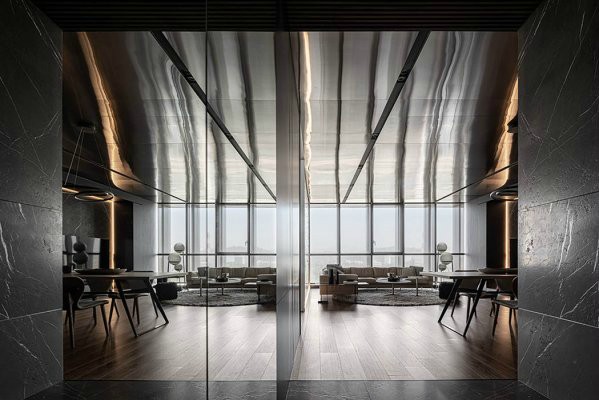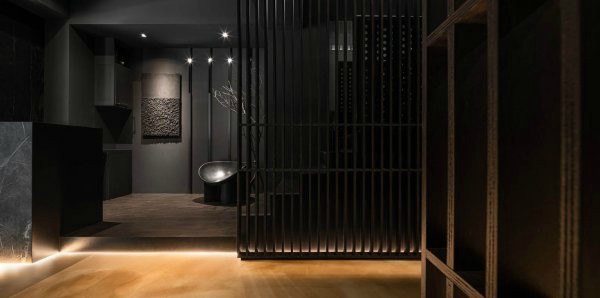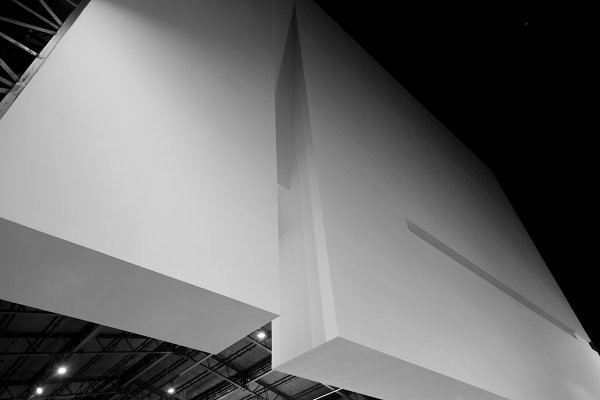作品名称 | 入境 The Midst |
设 计 师 | 唐忠汉 |
空间类型 | 工作空间 |
房屋格局 | 复层(1F+B1F) |
设计风格 | |
建案地点 | 台北市 |
摄影师 | 岑修贤摄影工作室MW Photo Inc. |
空间坪数 | 90坪(297平米) |
主要建材 | 梧桐木、烤漆玻璃、盘多摩、雕刻黑大理石、山水一色大理石 |
设计理念 | 入境
外,远也。——《说文》 内,入也。自外而入也。——《说文》
尝试藉由空间形塑,置入虚空间及材料延伸、视觉交会,重新界定空间边界。
退缩与隐藏
将玄关刻意退缩於室内、入口大门转向,而产生一进一景之空间体验层次,宽阔的骑楼面积与门口的虚空间,未踏入空间却已感受沈稳安定。别於传统医疗空间既定形象,特将柜台隐於玄关片墙之後,跳脱一般官式柜台带来的压迫与沉闷,形塑一使人沉静放松之空间场域。
穿透与链结
候诊区域配置着重於消除与骑楼之分界,大面积之落地玻璃与木质格栅使视线恣意穿透,骑楼天花材质延伸入内,内外齐高地平皆大幅提升空间视觉开阔,使内外环境产生链结与延伸关系。 候诊区置入透明悬吊玻璃量体,使形成区域分割却无阻视线;电视消失於候诊区亦为特意安排,等待时阅读文字/阅读户外行人同样精彩;服务柜台侧墙之片墙脱开,亦满足了服务上需求 。 治疗空间之穿透运用於留白地坪、木质片墙之间,墙面量体脱开使空间开展,建立区域间连结与对话,同时消除空间密闭感与医疗产生之紧张感,注入空间视觉的趣味与生气。
THE MIDST
Outside, in the distance. ——"Shuowen Jiezi" Inside, to enter. To enter from outside to inside. ——"Shuowen Jiezi"
Through an endeavor in the formation of space, false spaces and material extensions are installed and visual perspectives created in order to redefine the boundaries of space.
Elusion and Concealment
The foyer had been deliberately pushed back and the direction of the main entrance redirected. The wide expanse of veranda and the false space by the entrance creates a calming stability before one has even entered inside. Differing from the established traditional image of a medical care space, the counter is hidden behind a side panel of the foyer, breaking free from the sense of strain and oppressiveness that the usual service counters often bring. Instead, a space setting is formed in which one can relax and unwind.
Thoroughness and Connections
The focus of the waiting area is on eliminating the division between itself and the veranda, so the large sheets of black-painted glass and the wooden grilles allow the line of sight to roam freely. The materials of the ceiling extend inwards and the leveled visual horizon greatly enhances the openness of the space, creating an interconnection and extension of the interior and exterior environment. Suspended glass lighting has been installed inside the waiting area, helping to divide the areas but not obscuring the view. The absence of any televisions inside the waiting area was planned deliberately; it is just as engaging to read while waiting, or to watch the people passing by outside. The service counter is hidden behind the side wall but still providing service functionality. The unobstructed treatment area comprises a space with the floor left blank and wood-paneled walls. The walls are no longer connected, allowing the space to extend, providing connection and dialog between the zones. At the same time, the stress associated with closed spaces and medical treatments is eliminated, to be replaced by a lively visual perspective and sense of energy. |

